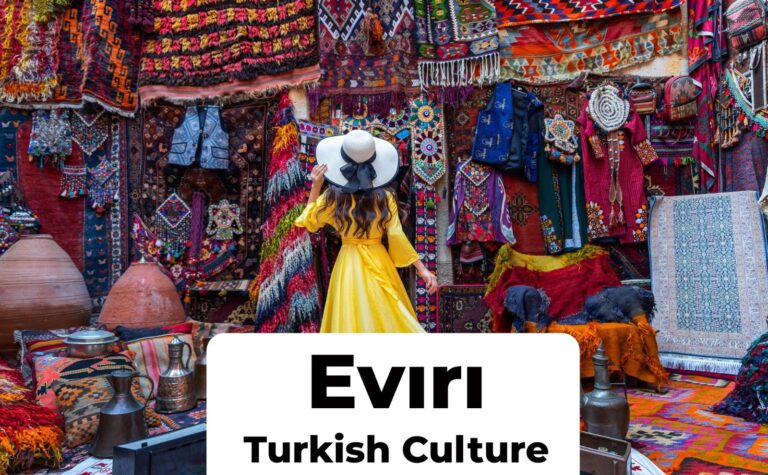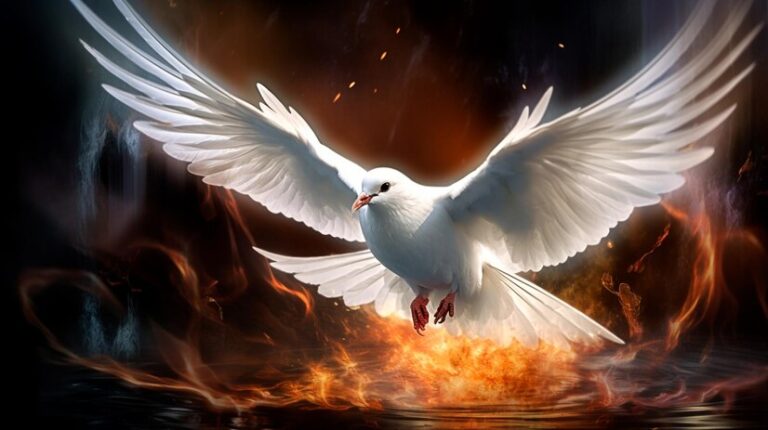From Santa Claus to Family Traditions: Exploring the Rich History of Christmas Day
Step into a world of twinkling lights, jolly laughter, and the sweet scent of freshly baked gingerbread. Christmas Day is a time when families come together to create cherished memories and celebrate the joyous holiday season. But have you ever wondered about the rich history behind this beloved day? From its ancient roots to modern-day traditions, join us on a captivating journey as we explore the fascinating origins and evolution of Christmas Day. Get ready to unwrap the secrets that lie beneath the tinsel and discover why this festive occasion holds such a special place in our hearts! So grab yourself a cup of cocoa, cozy up by the fireplace, and let’s dive right into this enchanting tale.
Etymology
The word “Christmas” has its roots in the Old English phrase “Cristesmæsse,” which means the Mass or festival of Christ. Over time, this evolved into the term we use today. The etymology of Christmas reminds us that at its core, this holiday is a celebration of the birth of Jesus Christ.
The combination of “Christ” and “Mass” reflects the religious significance attached to Christmas Day. It signifies a time for Christians around the world to come together and commemorate the birth of their Savior through prayer, worship, and acts of kindness. This linguistic history serves as a reminder that while traditions may vary across cultures, Christmas remains a deeply spiritual observance for many people worldwide.
Nativity
Nativity, the birth of Jesus Christ, is at the heart of Christmas Day celebrations. The story has been passed down through generations, captivating people with its message of hope and love. In early and medieval times, nativity scenes were reenacted in churches to bring the story to life for worshippers.
As centuries passed, nativity traditions evolved. In the 17th and 18th centuries, elaborate nativity scenes became popular among European nobility. These displays featured intricately crafted figurines depicting Mary, Joseph, baby Jesus, angels, shepherds, and wise men. The scenes became a focal point in homes during Christmas festivities as families gathered around them to reflect on the miracle of Christ’s birth.
Nativity is central to Christmas Day celebrations. Reenactments in early times eventually led to elaborate nativity scenes popularized by European nobility from the 17th century onwards. Featuring finely crafted figurines representing key characters from the biblical account of Jesus’ birth; these displays became cherished symbols that brought families together during this special time of year
Early and medieval era
During the early and medieval era, Christmas was a religious observance filled with rich traditions. It originated as a celebration of the birth of Jesus Christ and evolved over time to incorporate various customs. In these times, Christmas was primarily marked by church services and feasts held in honor of the Nativity. People would gather together to sing hymns, offer prayers, and reflect on the significance of this holy day.
As Christianity spread throughout Europe during the medieval period, Christmas became more ingrained in society. Festivities included elaborate nativity scenes depicting the birth of Jesus, which were often displayed in churches or even in people’s homes. The exchange of gifts also emerged as a common practice during this time, symbolizing acts of generosity inspired by the three wise men who presented gifts to baby Jesus. Despite its religious nature, many pagan elements from pre-Christian winter festivals were incorporated into Christmas celebrations during this era. It was a time when communities came together to celebrate their faith and create lasting traditions that still endure today.
17th and 18th centuries
During the 17th and 18th centuries, Christmas celebrations underwent significant changes. In England, Puritans viewed Christmas as a pagan festival and banned its observance. However, with the Restoration of Charles II in 1660, Christmas was once again celebrated with great fervor.
In Europe and America, the holiday became more focused on family gatherings and gift-giving. The tradition of decorating trees also gained popularity during this time. It was in Germany that the tradition began using fir trees adorned with candles and ornaments. As European immigrants brought their customs to America, Christmas trees became a cherished part of holiday festivities across the country.
19th century
The 19th century marked a significant turning point in the celebration of Christmas. As industrialization took hold, people began to embrace new customs and traditions. The popularity of Christmas trees grew, thanks to Queen Victoria and Prince Albert’s influence. Charles Dickens’ beloved story “A Christmas Carol” captured the spirit of giving and generosity during this era. Additionally, the commercialization of Christmas started to emerge with the introduction of mass-produced holiday cards and gifts.
In America, German immigrants brought their cherished traditions like decorating evergreen trees and exchanging presents on Christmas Day. The concept of Santa Claus also became more prominent during this time, with Clement Clarke Moore’s poem “A Visit from St. Nicholas” (commonly known as “‘Twas the Night Before Christmas”) shaping our modern image of Santa Claus as a jolly old man in a red suit.
The 19th century set the stage for many enduring customs that continue to be celebrated today, making it an important period in the rich history of Christmas Day.
20th and 21st centuries
In the 20th and 21st centuries, Christmas Day has evolved into a global celebration that combines religious traditions with modern customs. With advancements in technology and globalization, the holiday has become more commercialized and accessible to people around the world.
In recent years, there has been a renewed focus on family gatherings, gift-giving, and spreading joy during this festive season. The rise of social media platforms has also made it easier for people to share their holiday experiences and connect with loved ones who may be far away. Additionally, there is an increased emphasis on sustainability and conscious consumerism during this time of year as people strive to reduce waste and prioritize eco-friendly practices. The 20th and 21st centuries have seen Christmas Day evolve into a multicultural celebration that embraces both tradition and innovation.
History
How Did Christmas Start?
The origins of Christmas can be traced back to ancient times when people celebrated the winter solstice, marking the shortest day and longest night of the year. In many cultures, this was a time of feasting, merriment, and honoring various deities associated with fertility and rebirth.
Saturnalia and Christmas
One key influence on the development of Christmas is Saturnalia, a Roman festival held in late December. During Saturnalia, people exchanged gifts, feasted together, and engaged in wild revelry. As Christianity spread throughout Europe during medieval times, these pagan customs merged with Christian beliefs to create what we now know as Christmas. So while December 25th became associated with Jesus’ birth much later on, the roots of our modern holiday reach far beyond its religious significance.
Is Christmas Really the Day Jesus Was Born?
Christmas has long been celebrated on December 25th as the day Jesus Christ was born. However, there is no definitive evidence that supports this claim. The Bible does not specify a date for his birth; it simply mentions that shepherds were watching their flocks at night when he was born. Over time, early Christians adopted December 25th as a way to incorporate existing winter festivals into their religious practices. Regardless of its historical accuracy or theological implications though, what remains undeniable is how deeply ingrained Christmas has become in our cultural fabric around the world.
When Christmas Was Cancelled
During Oliver Cromwell’s rule over England in the mid-17th century (from 1649 to 1660), he banned any public celebration of Christmas due to its perceived association with decadence and paganism. This led to widespread protests from citizens who cherished their traditional holiday festivities. When Charles II ascended to power after Cromwell’s death in 1660,
Christmas celebrations were happily reinstated across England.
How Did Christmas Start?
It’s fascinating to trace the origins of Christmas and understand how it all began. The history of this beloved holiday dates back centuries, intertwining with various cultures and traditions along the way.
Christmas has its roots in ancient pagan celebrations like Saturnalia, which marked the winter solstice. Over time, as Christianity spread across Europe, these pagan festivals were gradually incorporated into Christian practices. As a result, December 25th became associated with the birth of Jesus Christ and was designated as Christmas Day. However, historical evidence suggests that Jesus was likely not born on this specific date.
The true origin story of Christmas is a complex tapestry woven together by different cultures, religions, and customs throughout history. By exploring its rich heritage, we can gain a deeper appreciation for the traditions we hold dear today.
Saturnalia and Christmas
Saturnalia and Christmas have an interesting connection that dates back to ancient Roman times. saturnalia, a festival dedicated to the god Saturn, was celebrated in late December with feasting, gift-giving, and revelry. This joyous occasion included the reversal of social roles, where slaves became masters for a day.
Over time, as Christianity spread throughout the Roman Empire, early Christians adopted certain aspects of Saturnalia into their own celebrations. The date of December 25th was chosen to coincide with this pagan festival. While some argue that this decision was made to Christianize the holiday season and attract more people to Christianity, others believe it was simply a practical choice due to its existing popularity.
Today, we can still see remnants of these ancient traditions in our modern Christmas celebrations – from exchanging gifts and enjoying festive meals with loved ones to embracing a sense of merriment during this special time of year. So next time you hang up your stockings or gather around the table for a holiday feast, remember the intriguing origins behind these cherished customs!
Is Christmas Really the Day Jesus Was Born?
Many people believe that Christmas is the day Jesus was born, but is this actually true? The truth is, there is no definitive evidence to confirm the exact date of Jesus’ birth.
The Bible does not provide a specific date for his birth, and historians have debated different theories over the years. However, December 25th became widely accepted as the celebration of Christ’s birth in the early Christian church. This date was likely chosen to coincide with existing pagan festivals that celebrated the winter solstice. Despite this uncertainty, Christians around the world continue to celebrate Christmas on December 25th as a time to honor and remember Jesus’ birth.
When Christmas Was Cancelled
During the 17th century, England underwent a dramatic shift with the rise of Puritanism. Under Puritan rule, Christmas celebrations were deemed pagan and sinful, leading to its cancellation in 1647. The Puritans believed that Christmas distracted people from their religious duties and encouraged immoral behavior.
The ban on Christmas lasted for almost two decades, with strict laws enforced against any form of celebration. People were forbidden from attending church services or engaging in festive activities like decorating their homes or exchanging gifts. However, despite these restrictions, many individuals continued to secretly celebrate Christmas in their own homes, keeping the spirit alive during this dark period in history.
Washington Irving Reinvents Christmas in America
In the early 19th century, Christmas in America was not widely celebrated. However, that all changed thanks to the influential writings of Washington Irving. In his book “The Sketch Book of Geoffrey Crayon,” Irving portrayed a warm and festive Christmas atmosphere that captured the imagination of readers across the country.
Irving’s descriptions of bustling city streets adorned with evergreen wreaths and families gathered around crackling fires helped popularize the idea of Christmas as a time for joy and merriment. His stories, such as “Christmas Eve” and “Christmas Day,” depicted scenes filled with generosity, love, and holiday cheer. Through his vivid storytelling, Washington Irving played a pivotal role in reinventing how Americans viewed and celebrated Christmas.
‘A Christmas Carol’
One of the most beloved Christmas stories of all time is Charles Dickens’ ‘A Christmas Carol’. This timeless tale follows the journey of Ebenezer Scrooge, a bitter and miserly man, as he is visited by three spirits on Christmas Eve. Through these haunting encounters, Scrooge learns the true meaning of Christmas and undergoes a profound transformation.
Dickens’ story resonates with audiences to this day because it highlights themes of redemption, compassion, and the joy that can be found in giving. The character of Scrooge serves as a cautionary reminder to not let greed or indifference overshadow our humanity. ‘A Christmas Carol’ continues to captivate readers and inspire adaptations across various mediums, reminding us all to embrace the spirit of generosity during the holiday season.
Who Invented Santa Claus?
When it comes to the jolly figure in a red suit that brings joy and gifts to children around the world, many wonder: who invented Santa Claus? The origins of this beloved character can be traced back to various influences throughout history.
One popular theory suggests that the modern depiction of Santa Claus was inspired by Saint Nicholas, a fourth-century Greek bishop known for his generosity towards children. Over time, traditions surrounding Saint Nicholas evolved and merged with other folklore figures like Father Christmas and Sinterklaas, creating the familiar image we know today. As these stories spread across different cultures and continents, they helped shape our perception of Santa Claus as a symbol of holiday cheer.
While there is no definitive answer to who exactly invented Santa Claus, it is clear that he has become an iconic figure in Christmas celebrations worldwide. Whether you believe in his magical abilities or simply enjoy the spirit he embodies, Santa Claus continues to bring joy and excitement during the festive season.
Christmas Facts
Did you know that Christmas has some fascinating facts associated with it? For starters, did you know that the tradition of hanging stockings by the fireplace originated from a story about St. Nicholas giving gold coins to three poor sisters? Another interesting fact is that the tallest Christmas tree ever recorded was a staggering 221 feet high!
In addition, did you know that “Jingle Bells” was actually written for Thanksgiving and not specifically for Christmas? It’s true! The popular holiday song was originally titled “One Horse Open Sleigh” and was written by James Lord Pierpont in 1857. These are just a few intriguing facts about Christmas that add to its rich history and traditions. There’s always something new to learn about this beloved holiday!
HISTORY Vault: the Christmas Truce
During the tumultuous time of World War I, a remarkable event took place on Christmas Day. Known as the Christmas Truce, soldiers from opposing sides put down their weapons and celebrated together in an unprecedented display of humanity amidst war. This historic moment is captured in HISTORY Vault, offering a glimpse into this extraordinary ceasefire that allowed enemies to come together and find common ground.
In the midst of trenches and gunfire, soldiers on both sides set aside their differences for one day. They exchanged gifts, played football matches, and even sang carols together. The Christmas Truce serves as a reminder that even in times of conflict, there can be moments of compassion and unity that transcend boundaries. Experience this incredible piece of history through footage and firsthand accounts available in HISTORY Vault – an opportunity to witness the power of peace during a time when it was needed most.
Observance and traditions
Observance and traditions during Christmas Day are an integral part of the holiday season. Many people attend church services to celebrate the birth of Jesus Christ, while others decorate their homes with festive lights and ornaments. Nativity plays are also a popular tradition, where children reenact the story of Jesus’ birth. Music and carols fill the air during this time, adding to the joyous atmosphere. Traditional cuisine is another highlight, with families coming together to enjoy delicious meals like roasted turkey or ham. And let’s not forget about gift-giving – exchanging presents is a cherished custom that brings happiness and excitement to both young and old.
Commemorative stamps featuring Christmas-themed designs are often released by postal services around the world, making them collector’s items for enthusiasts. The choice of date for celebrating Christmas varies across different Christian denominations and regions – some follow the Gregorian calendar, while others adhere to the Julian calendar. Regardless of when it falls on your calendar, Christmas Day remains a special occasion filled with love, joy, and meaningful traditions that bring families closer together. So whether you’re attending church services or decorating your home with twinkling lights, embrace these observances and traditions as you create cherished memories that will last a lifetime
Church attendance
Church attendance during Christmas is a longstanding tradition that holds deep significance for many individuals and families. On this special day, people gather in churches around the world to celebrate the birth of Jesus Christ. The atmosphere inside these places of worship is filled with reverence and joy as hymns are sung, prayers are said, and sermons preach about the true meaning of Christmas.
For believers, attending church on Christmas Day is not just a religious obligation but also an opportunity to connect with their faith community and deepen their spirituality. It provides a sense of belonging and unity as everyone comes together to honor the birth of Christ. Churches are beautifully adorned with festive decorations like wreaths, candles, and nativity scenes, creating a warm and inviting ambiance that adds to the sacredness of the occasion.
In essence, church attendance on Christmas Day serves as a reminder that amidst all the festivities and commercialization surrounding this holiday season, it is important to pause and reflect on the spiritual aspect of Christmas. It allows individuals to find solace in their faith while being surrounded by fellow worshippers who share their beliefs. Together, they create a collective energy that uplifts spirits and brings an extra dose of peace and joy during this magical time of year.
Decorations
Decorations play a vital role in setting the festive mood during Christmas. From sparkling lights to shimmering ornaments, they transform homes into magical wonderlands. The tradition of adorning trees with decorations is said to have originated in 16th century Germany and spread throughout Europe. Today, people around the world eagerly deck their halls with garlands, wreaths, and stockings hung by the chimney with care.
Every corner of the house becomes a canvas for creativity as families bring out their cherished ornaments year after year. Whether it’s a homemade paper chain or a delicate glass bauble passed down through generations, each decoration holds special meaning. The twinkling lights create an enchanting atmosphere while candles add warmth and coziness to holiday gatherings. It’s truly a sight to behold when houses are adorned with colorful displays that capture the spirit of Christmas joy!
Nativity play
Nativity plays, also known as Christmas pageants, are a beloved tradition during the holiday season. These theatrical performances reenact the birth of Jesus Christ and often involve children portraying various biblical characters. It’s a heartwarming sight to see young actors dressed as Mary, Joseph, shepherds, angels, and even the Three Wise Men.
The nativity play typically takes place in churches or schools and is performed for families and community members. The simplicity of these productions captures the essence of Christmas as it reminds us of the humble beginnings of Jesus’ birth. Whether you’ve watched or participated in a nativity play yourself, it’s an experience that brings joy and warmth to many hearts during this festive time of year.
Music and carols
Music and carols play a significant role in the festive celebration of Christmas. The joyous melodies and heartfelt lyrics create an enchanting atmosphere that brings people together. From traditional hymns to modern pop renditions, there is something for everyone’s taste.
During this time of year, choirs gather to fill churches with harmonious voices, resonating through the halls as congregations join in song. Whether it’s singing beloved classics like “Silent Night” or dancing along to upbeat tunes like “Jingle Bell Rock,” music has the power to uplift spirits and spread holiday cheer. So, let the melodies carry you away as you embrace the magic of Christmas through its enchanting songs.
Traditional cuisine
Traditional cuisine is an integral part of Christmas Day celebrations around the world. From succulent roasted turkey with all the trimmings to delectable Christmas pudding, the festive feast is a gastronomic delight. Families gather around the table, savoring dishes passed down through generations, indulging in rich flavors and heartwarming aromas that fill the air.
In many countries. Traditional Christmas foods vary widely. In Italy, a classic dish is panettone a sweet bread filled with dried fruit and nuts. In Germany, it’s not Christmas without stollen a rich yeast cake packed with marzipan and dusted with powdered sugar. And let’s not forget about mince pies in England or tamales in Mexico! These culinary delights add an extra layer of joy to the holiday season, creating lasting memories for families as they come together to enjoy these festive delicacies.
Commemorative stamps
Commemorative stamps have become a cherished part of Christmas Day traditions. These special stamps are released every year to celebrate the holiday season and showcase beautiful designs that capture the spirit of Christmas. From festive images like Santa Claus and snowflakes to scenes depicting the nativity, these stamps add a touch of joy and elegance to our mail during this time of year.
Collecting Christmas-themed stamps has also become a popular hobby for many enthusiasts. People eagerly anticipate the release of new designs each year and take pride in building their collection over time. These commemorative stamps not only serve as postage but also as miniature works of art that can be admired long after they’ve been used. Whether you’re sending holiday greetings or simply appreciating the beauty of these stamps, they bring an extra element of cheer to your Christmas mailings.
Gift giving
Gift giving is a cherished tradition during Christmas time. It brings joy and excitement to both the giver and receiver. People spend hours searching for the perfect gifts, carefully selecting items that will bring happiness to their loved ones. The act of giving gifts is a way to show love, appreciation, and thoughtfulness towards others.
The exchange of presents during Christmas has deep historical roots. It is believed to have originated from the biblical story of the three wise men who presented gifts to baby Jesus on his birth. Today, gift giving has become an integral part of celebrating Christmas in many cultures around the world.
People put great effort into finding meaningful gifts that reflect the interests and personalities of those they care about. The anticipation leading up to exchanging presents adds an element of surprise and delight on Christmas morning or during holiday gatherings with family and friends.
Gifts come in all shapes and sizes, ranging from handmade crafts to store-bought goodies. Some people prefer practical presents while others opt for sentimental or personalized items. No matter what type of gift it may be, the gesture behind it holds immense value as it symbolizes love, generosity, and goodwill during this festive season.
Whether it’s a small token or something more extravagant, gift giving creates moments filled with warmth and happiness as we share in the joyous spirit of Christmas together with our loved ones.
Choice of date
The choice of date for Christmas Day has been a topic of debate and discussion throughout history. Originally, it was not celebrated on December 25th, but rather in early January. This was due to the influence of the Julian calendar, which had a different calculation for the winter solstice.
In the 4th century, Pope Julius I declared December 25th as the official date to celebrate Christ’s birth. Some historians believe this decision was made to align with pagan festivals that were already being observed during this time of year. Others argue that it was based on biblical interpretation and symbolism. Regardless of the reasons behind it, December 25th has become synonymous with Christmas Day in many parts of the world today.
Date according to Julian calendar
The Julian calendar, named after Julius Caesar, was the predominant calendar in Europe for over 1600 years. Under this calendar system, Christmas Day was celebrated on December 25th. However, due to a discrepancy between the Julian and Gregorian calendars, there is now a difference of 13 days between them.
This means that according to the Julian calendar, Christmas falls on January 7th. This date is still observed by some Eastern Orthodox churches and communities around the world. It’s fascinating how different cultures and traditions can influence the way we celebrate such an important holiday!
Table of dates
Christmas Day is celebrated on different dates around the world, depending on various calendars and traditions. In the Gregorian calendar, which is widely used today, Christmas falls on December 25th. However, in some Eastern Orthodox churches that follow the Julian calendar, Christmas is observed on January 7th. This difference in dates can lead to unique celebrations and festivities throughout different regions.
The table below provides a glimpse into how Christmas Day is celebrated across different countries:
– December 25th: United States, Canada, Australia
– January 6th: Armenia
– January 7th: Russia, Ukraine, Serbia
These are just a few examples of the diverse range of dates when people commemorate this special holiday. It’s fascinating to see how cultures have adapted and preserved their own customs surrounding Christmas over time. So whether you celebrate on December 25th or another date entirely, the spirit of joy and giving remains at the heart of this festive season!
Economy
The economy plays a significant role in the celebration of Christmas Day. From the sale of decorations and gifts to holiday travel and dining, this festive season brings about a boost in economic activity. Businesses eagerly anticipate the holiday rush as consumers open their wallets to indulge in the spirit of giving.
During this time, retail stores offer special promotions and discounts to attract shoppers, while online retailers experience a surge in sales. Additionally, industries like transportation and hospitality benefit from increased demand as people travel to visit loved ones or go on vacations. The economic impact of Christmas extends beyond just purchasing goods; it creates job opportunities and stimulates various sectors of the economy, making it an essential time for businesses both big and small.
Controversies
Controversies surrounding Christmas have been a topic of debate for centuries. One major controversy revolves around the commercialization and consumerism that has become synonymous with the holiday. Critics argue that the true meaning of Christmas is often overshadowed by materialistic pursuits.
Another controversial aspect is the inclusion of Santa Claus in Christmas celebrations. While many see him as a beloved figure who embodies generosity and joy, others argue that his presence detracts from the religious significance of the holiday. Some also question whether it is appropriate to perpetuate the belief in Santa Claus among children.
These controversies highlight ongoing discussions about how best to celebrate and honor Christmas traditions while staying true to its origins. As society continues to evolve, it remains important to engage in thoughtful conversations about these issues, ensuring that we preserve what makes Christmas meaningful while embracing new interpretations and practices.







